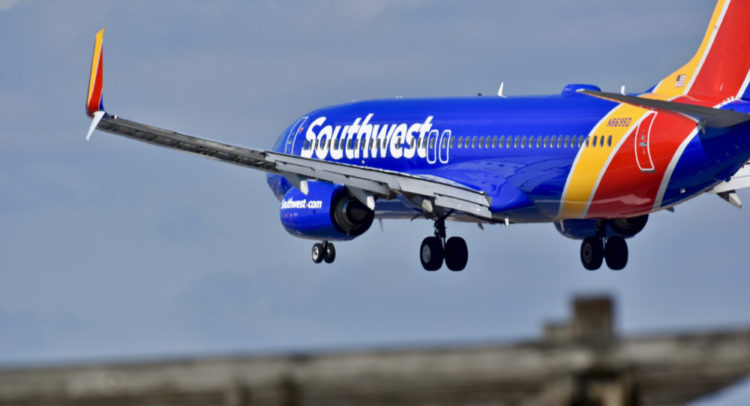Texas-based Southwest Airlines (LUV) offers air travel services. It suspended its dividend and share repurchase programs in response to the adverse financial effects of the COVID-19 pandemic. Before the pandemic, the company had returned $12.9 billion to shareholders through dividends and share repurchases since 2010.
With this in mind, we used TipRanks to take a look at the latest financial performance and newly added risk factors for Southwest Airlines. (See Analysts’ Top Stocks on TipRanks)
Q3 Financial Results
Southwest Airlines reported revenue of $4.7 billion for Q3, exceeding the consensus estimate of $4.58 billion. Revenue was less than $1.8 billion in the same quarter last year due to the adverse impact of the pandemic. It posted an adjusted loss per share of $0.23, beating the consensus estimate of a $0.27 loss per share.
Southwest Airlines ended Q3 with $16 billion in cash and $1 billion available under a revolving credit facility. The company has $11.2 billion in debt. (See Southwest Airlines stock charts on TipRanks).
Risk Factors
According to the new TipRanks Risk Factors tool, Southwest Airlines’ main risk category is Legal and Regulatory, representing 32% of the total 22 risks identified for the stock. The company recently updated its profile with one new Legal and Regulatory risk factor.
The company informs investors that President Joe Biden’s COVID-19 vaccine mandate could have a material adverse effect on its operations. It mentions that some of its employees may fail to comply with the vaccine mandate or qualify for an exemption, which could disrupt its operations. It further cautions that its operations could be harmed if federal agencies handling critical areas such as security and air traffic control experience personnel shortages due to the vaccine mandate.
In addition to introducing the new Legal and Regulatory risk tied to the vaccine mandate, Southwest Airlines has also updated a previously highlighted Production category risk factor. It reminds investors that its business is labor-intensive and that failure to maintain sufficient personnel could adversely affect its operations. The company says that it ended Q3 2021 with a significantly smaller workforce than it had before the pandemic. It mentions that its pilots are subject to the mandatory retirement age of 65 years.
Southwest Airlines informs investors that there is intense competition for skilled personnel in its industry. As a result, the company has had to raise the minimum compensation for some of its employees to retain its skilled workforce. But it cautions that an unexpected loss of critical skilled personnel could adversely affect its operations.
The Legal and Regulatory risk factor’s sector average is 17%, compared to Southwest Airlines’ 32%. The Production risk factor’s sector average is 19%, compared to Southwest Airlines’ 18%. Southwest Airlines’ stock has declined about 3% since the beginning of 2021.

Analysts’ Take
Jefferies analyst Sheila Kahyaoglu recently reiterated a Buy rating on Southwest Airlines stock with a price target of $60. Kahyaoglu’s price target suggests 32.54% upside potential.
Consensus among analysts is a Strong Buy based on 12 Buys and 3 Holds. The average Southwest Airlines price target of $60.64 implies 33.95% upside potential to current levels.

Related News:
Johnson Controls Hikes Quarterly Dividend by 26%
Tesla’s China-Made EV Sales Fall in November — Report
RH Rises 12% on Upbeat Q3 Results; Ups Guidance

